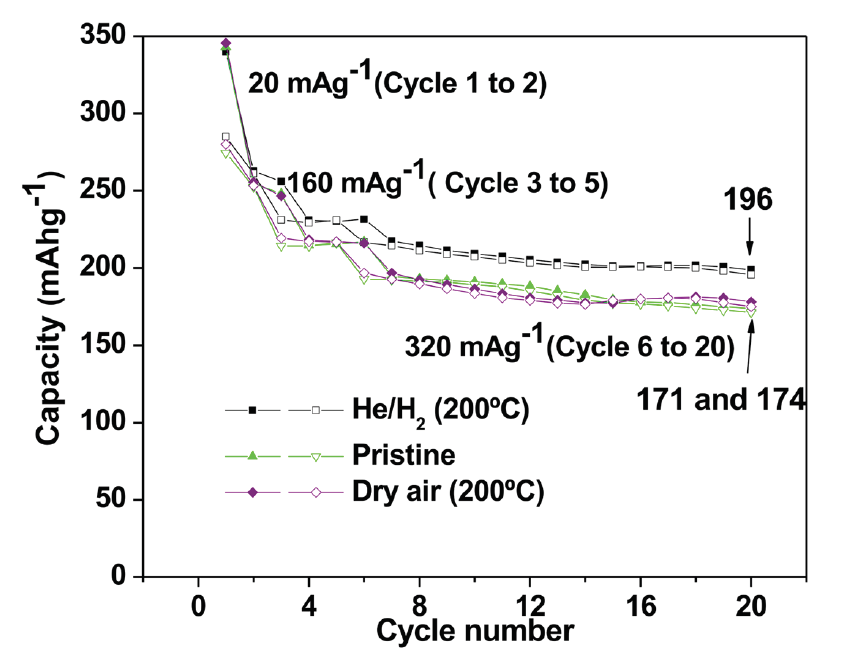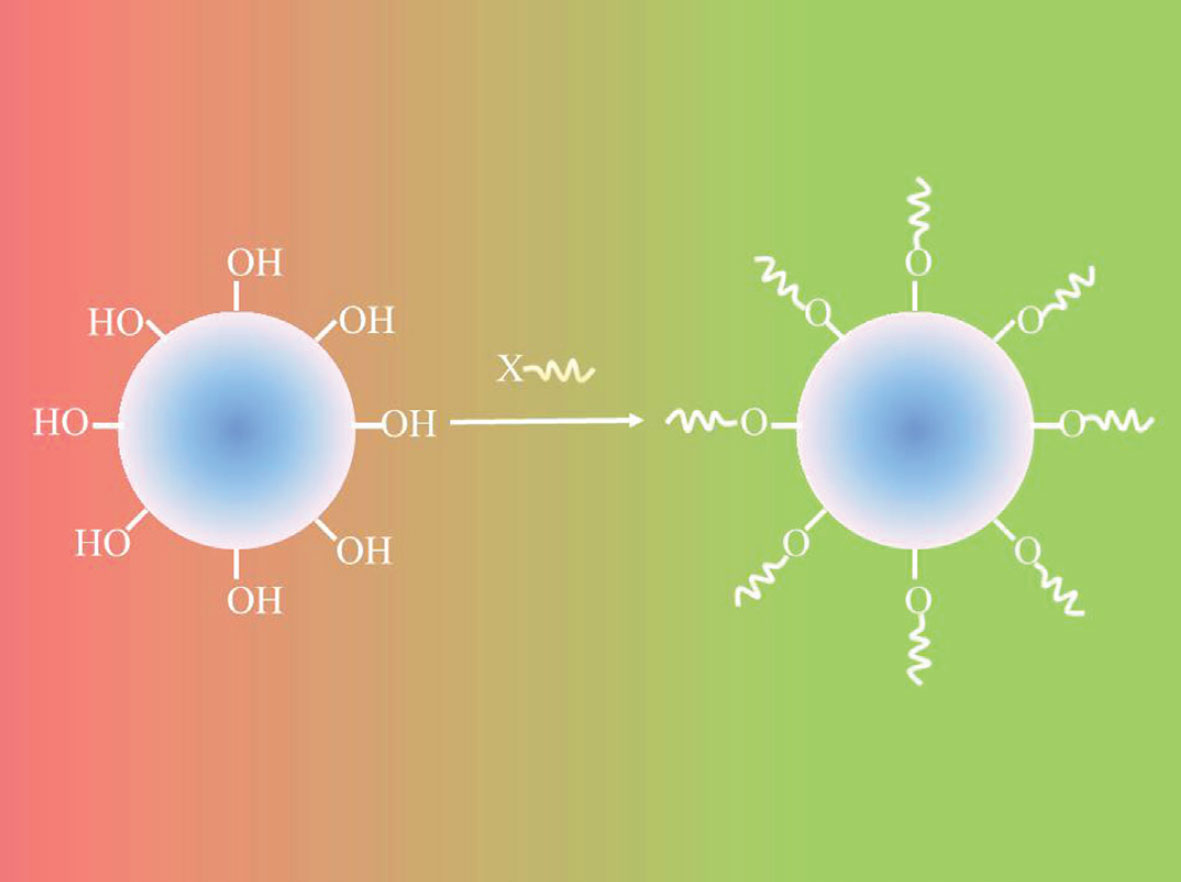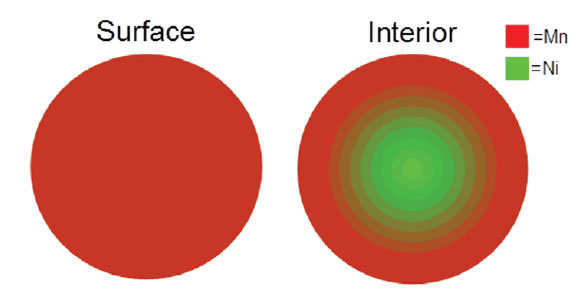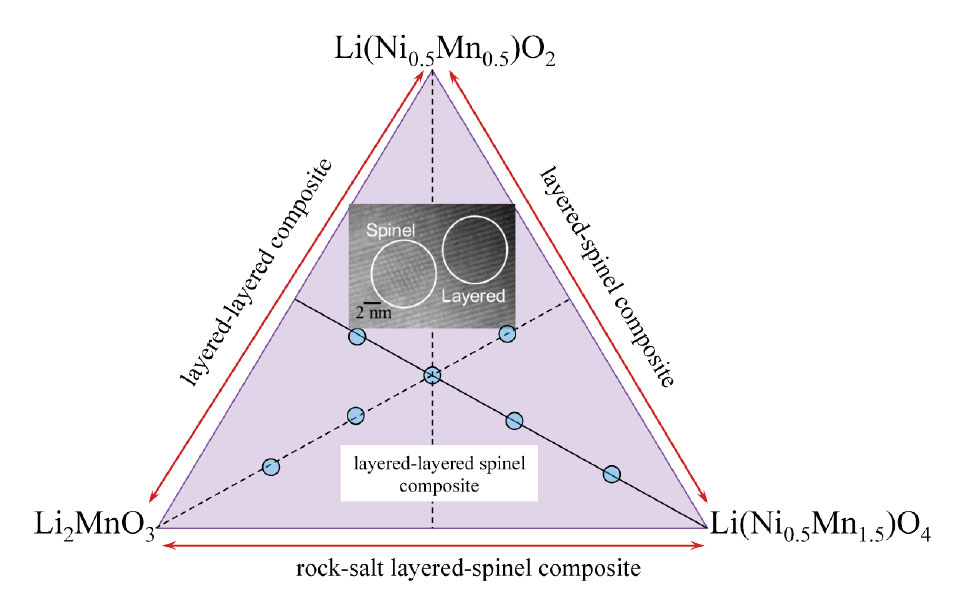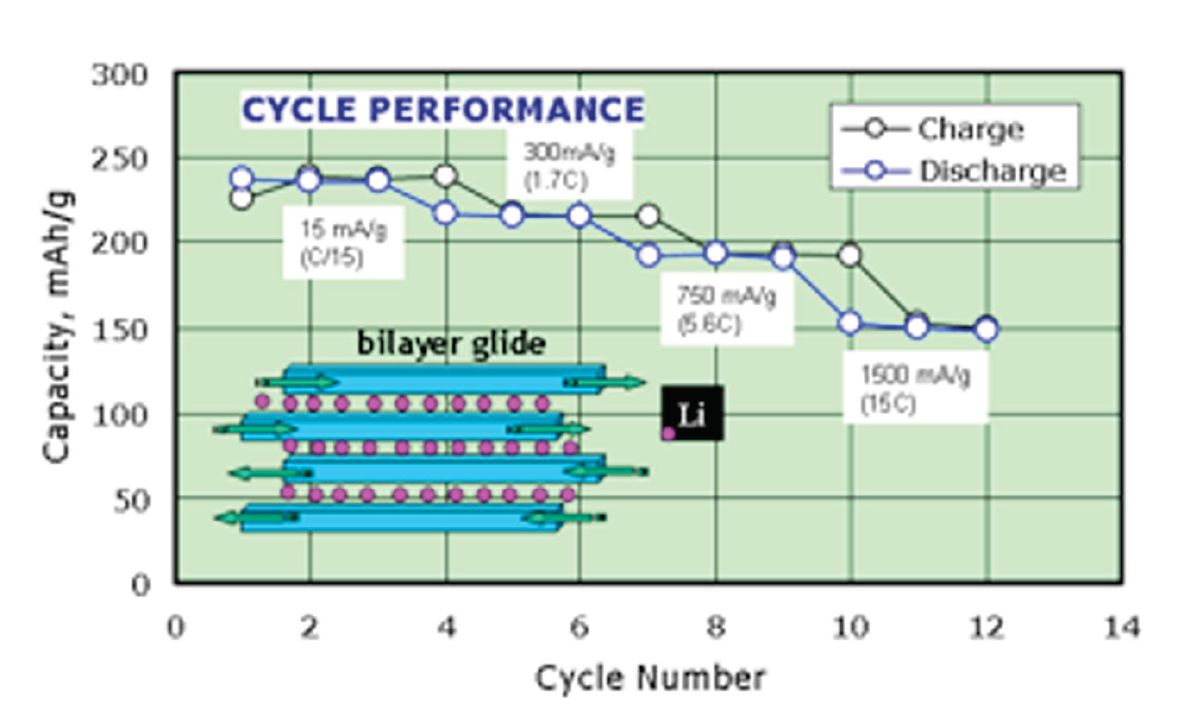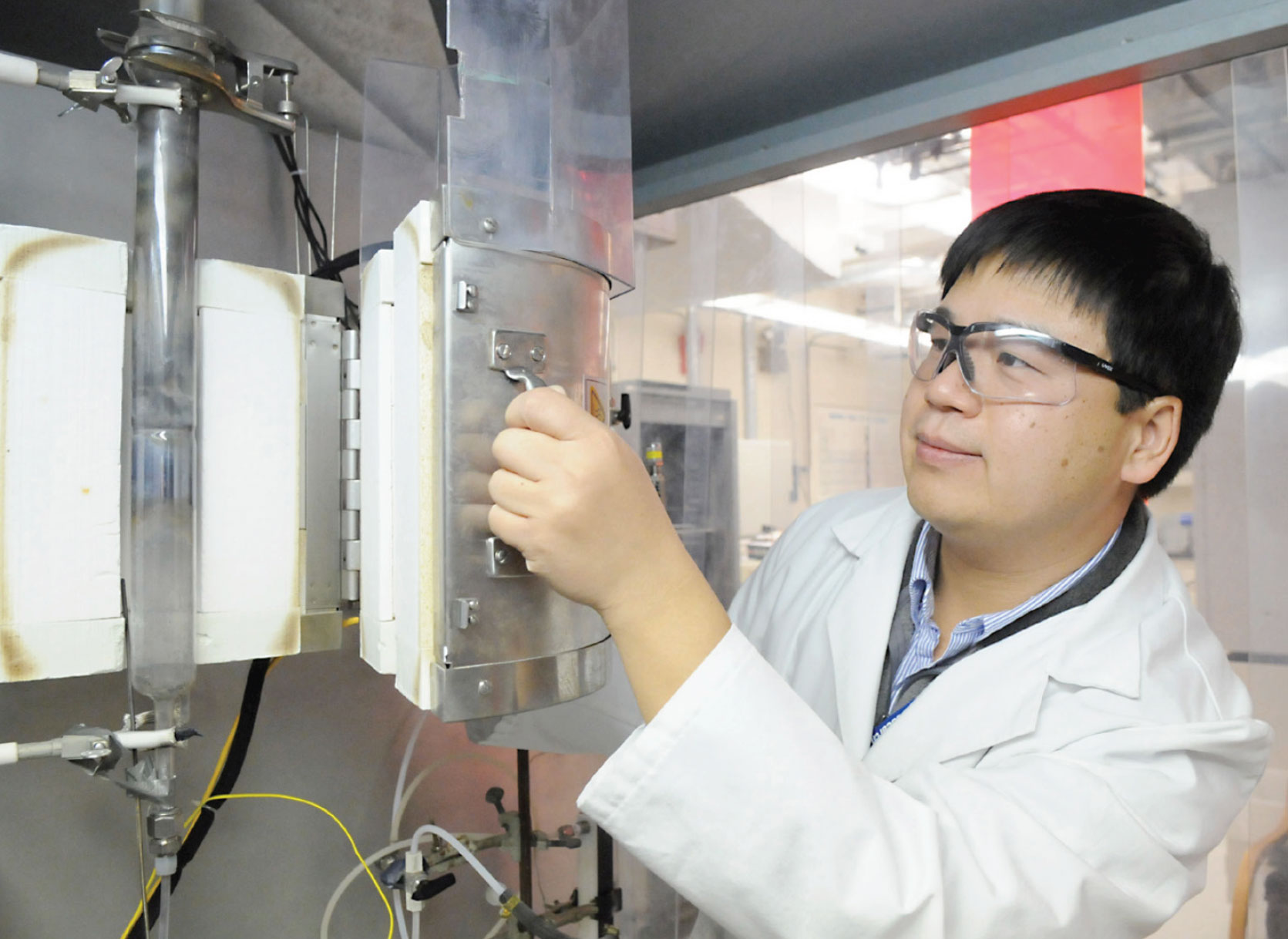The Invention
Two processes are provided. In the first process, an electro-active material is heated and exposed to a reducing gas to form a surface-treatment layer on the electro-active material. The reducing gas comprises hydrogen, carbon monoxide, carbon dioxide, an alkane, an alkyne, or an alkene. The process also includes introducing an inert gas with the reducing gas. The surface-treated, electro-active material may be used in a variety of applications such as in a rechargeable lithium battery.
The second process includes mixing an electro-active material and a reducing agent to form a surface treatment layer on the electro-active material; and then removing the reducing agent. Removal includes vacuuming, filtering, or heating. The reducing agent is hydrazine, NaH, NaBH4, LiH, LiAlH4, CaH2, oxalic acid, formic acid, diisobutylaluminium hydride, zinc amalgam, diborane, a sulfites, dithiothreitol, or Sn/HCl, Fe/HCl. The partially reduced electro-active material can be used in a variety of applications such as a rechargeable lithium battery, a primary lithium battery, or a secondary lithium battery.
Benefits
Increased electrical conductivity of cathode materials, which improves the rate capability of the material. By this process the battery can be charged or discharged faster without losing its electrochemical performance.
Applications and Industries
Coatings for electrodes used in batteries for
- Electric and plug-in hybrid electric vehicles;
- Portable electronic devices;
- Medical devices; and
- Space, aeronautical, and defense-related devices.
Developmental Stage
Proof of concept
